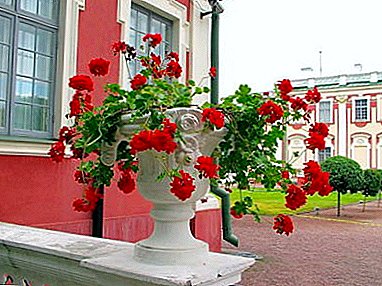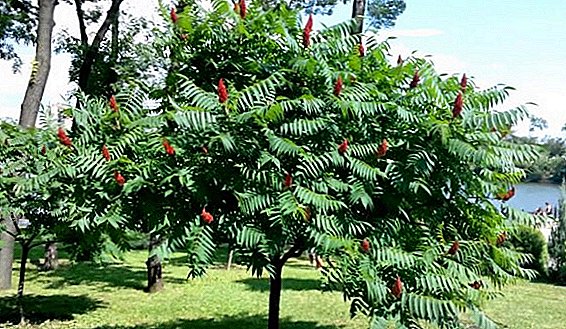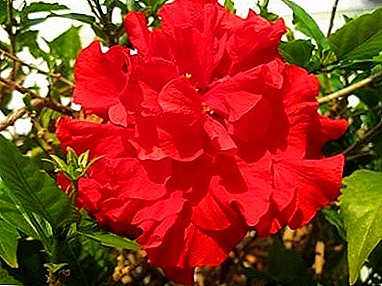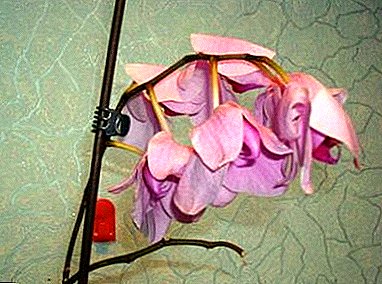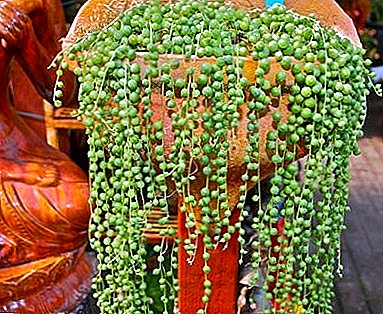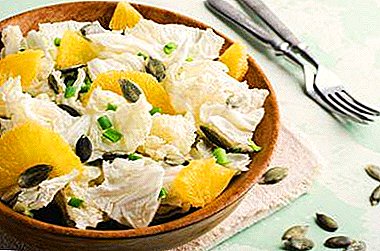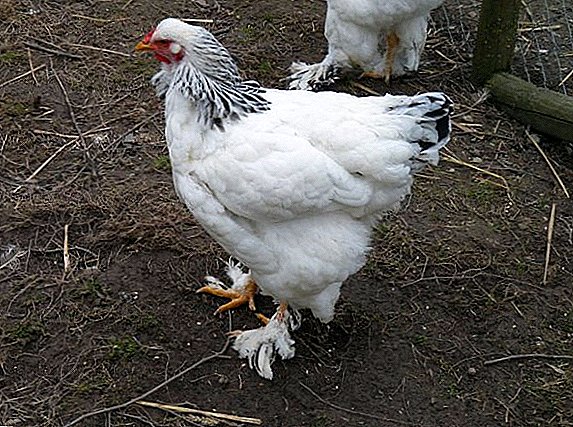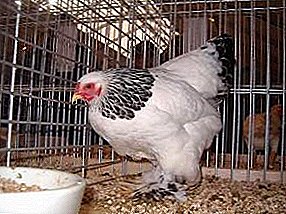
Dwarf Brahma breed are one of the most popular among domestic poultry breeders.
They are simple to maintain, easily divorced, and also have an attractive appearance, which allows owners of small dacha plots to start them to decorate the yard.
The first attempts to reduce ordinary Brahma chickens were carried out in 1887 by I.F. Entwislom. Unfortunately, this attempt did not succeed, as the birds remained too large.
However, already in 1889 and 1891 the first dwarf hen Brama were bred by the breeder L. Neubert.
Initially, these chickens were bred from the small-legged small hens and silk breed. Gradually, dwarf Bramah chickens of different colors were bred, among which kopatchatye, blue and yellow individuals were often found. All of them were officially registered in 1950, 1980 and 1988, respectively.
Breed description Dwarf Brama
 Chickens of this species have a relatively large torso, which visually seems even larger due to the broad shoulders and broad back.
Chickens of this species have a relatively large torso, which visually seems even larger due to the broad shoulders and broad back.
Usually, chickens with such a constitution of the body have the same broad chest, but in the dwarf hens of Brahma, it holds high, which reduces its size. At the same time, the line of the bird's back should be curved so that at the rear of the wide saddle the plumage on the tail can rise almost in a straight vertical line.
The tail feathers of dwarf chickens were tiled., and the tail looks more lush because of the large amount of down raising feathers. Roosters have large plaits that diverge slightly at the end.
Males are also characterized by long sleeve-like extensions on the shins, called "hawk-like knees". The limbs of the extremities also have plumage, located on the sides to the middle and outgoing toes.
They have a small stature. It is because of this that they received such a naming. Chickens and roosters have a small pea-shaped comb, the same small earrings and a small fold of skin on the neck, which helps to distinguish this breed from other similar dwarf ones. The eyes of chickens can be both red and orange. As a rule, it depends on the color of the plumage.
Features
 Dwarf chickens Brahma have a very unusual appearance, which is appreciated by many bird breeders.
Dwarf chickens Brahma have a very unusual appearance, which is appreciated by many bird breeders.
These chickens are characterized by shaggy paws and very lush plumage on the tail. In addition, they have an unusual, slightly full body constitution. All these signs make this dwarf bird an ideal decoration for a private summer cottage.
Also, the pluses need to include high survival. They can easily survive even with extreme cold and great heat.. However, they are almost immune to sudden changes in temperature and humidity.
However, we must remember that this applies only to adults. Young animals should be kept in dry areas, as chickens have a slightly lower survival rate when compared with adult birds.
This breed of chickens is different calm and completely phlegmatic character. She perfectly gets on with any other poultry. Even roosters never fight for territory. Moreover, chickens do not need daily walking. They can be kept in a specially equipped house or an aviary where they will feel comfortable.
Laying hens Brahma love to take care of their offspring. They well incubate the laying of eggs, and after the hatching of the young, they actively spend time with him, taking care of the condition of the chickens. The strong development of maternal instinct reduces the number of dead embryos in the clutch, and also allows breeders not to spend money on the installation of an incubator.
Content and cultivation
 Dwarf chickens practically do not require special care and maintenance.
Dwarf chickens practically do not require special care and maintenance.
It is enough for a bird breeder to build a convenient poultry house so that all individuals feel comfortable. It should be noted that the height of the roost for roost should not exceed 20-30 cm. This will allow all birds to quickly jump and jump from them without threatening the limbs.
Too high slats can become inaccessible to dwarf chickens., therefore, they will sleep on the litter, where the risk of catching the infection increases significantly.
Also, do not make a multi-tiered perch in the house. Individuals that occupy the upper "shelves" will begin to soil the lower individuals, which will affect the quality of life of birds. It is better to arrange for the chickens to have a larger house with more comfortable rails than the small one. In this case, under the feet of birds should be dry litter.
Its thickness should not exceed 5 cm in the summer and 8 cm in the winter. In case of excessive contamination, it should be removed immediately, otherwise various pathogens will be diluted in the litter.
 Lari chickens are sports breeds. Usually they are bred for participation in battles.
Lari chickens are sports breeds. Usually they are bred for participation in battles.
If you click on the following link, you can find out all the details about cnemidocoptosis.
As for feeding, it should occur twice a day at the same time. Birds are usually fed whole grain feed supplemented with vitamins and proteins. Sometimes they are given “feeding” before bedtime so that the birds do not experience a feeling of hunger. Layers can add eggshells and shells to feed, so that they carry more eggs.
Specifications
Roosters can reach a weight of 1.5 kg, and chicken - 1.3 kg. At the same time, this decorative breed is characterized by good egg production. Laying eggs can produce up to 80 small eggs with a light brown shell.
Where can I buy in Russia?

- The sale of adults, as well as eggs for incubation, is handled by the Nemchenko bird park, located at Krasnodar, ul. Veterinary, 7. Here you can find dwarf chicken Brahma, having different colors. You can find out the cost of poultry and eggs by phone +7 (861) 225-73-12
- You can buy young stock of this breed and hatching eggs on the site //www.cipacipa.ru/. Here is a large selection of colors dwarf hens Brahma. The poultry farm itself is located 20 km from the Moscow Ring Road on the Nosovihinskoe highway. You can order by phone + (910) 478-39-85.
Analogs
 Fans of dwarf hens Brahma can get in his household Dwarf Cochinchins.
Fans of dwarf hens Brahma can get in his household Dwarf Cochinchins.
They also have an attractive appearance, good egg production. Perfectly take root in any, even the most severe climate. It does not require special care and consumes a small amount of feed.
For fans of more unusual decorative chickens will go dwarf silk chickens. They are unpretentious in content. At the same time, they have a rather unusual plumage, which can surprise any guest at the dacha.
If the size of the bird is not important, then you can opt for the big chickens Brahma and Cochinhinah. However, it must be remembered that larger birds require more space on the site, as well as more feed.
Conclusion
Dwarf chickens Brahma are replicas of large Brahm. They completely repeat their body structure, character, habits and feather cover, however, such hens do not need a large amount of food and spacious poultry houses.
This allows you to contain a large number of dwarf Brahm on a limited area without additional financial costs. That is why this breed is ideal for summer residents.


